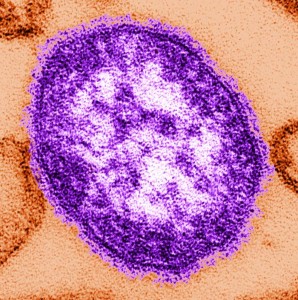The Philippines was hit hard with measles in 2014. The number of fatalities due to measles on the archipelago reached at least 110, according to the latest World Health Organization update.

The report states that there were 57,564 suspected cases of measles, including 21,403 confirmed cases reported in the Philippines from January 1 through December 20, 2014.
The World Health Organization and the Philippines Department of Health are working to control the outbreak, including conducting vaccination campaigns.
The most important clinical predictors are the following features:
- generalized maculopapular rash, usually lasting three or more days, and
- fever (at least 38°C, if measured) present at the time of rash onset, and
- cough or coryza or conjunctivitis.
Measles is transmitted by airborne droplets and direct contact with discharges from respiratory mucous membranes of infected persons and less commonly by articles freshly soiled with nose and throat secretions.
Measles is highly infectious and can persist in the environment for at least 30 minutes.
The incubation period is variable and averages 10 days (range: 7 – 18 days) from exposure to the onset offever, with an average of 14 days from exposure to the onset of rash. The infectious period of patients with measles is five days before, to four days after, the appearance of the rash.


5 thoughts on “Philippines measles death toll hits 110 in 2014”